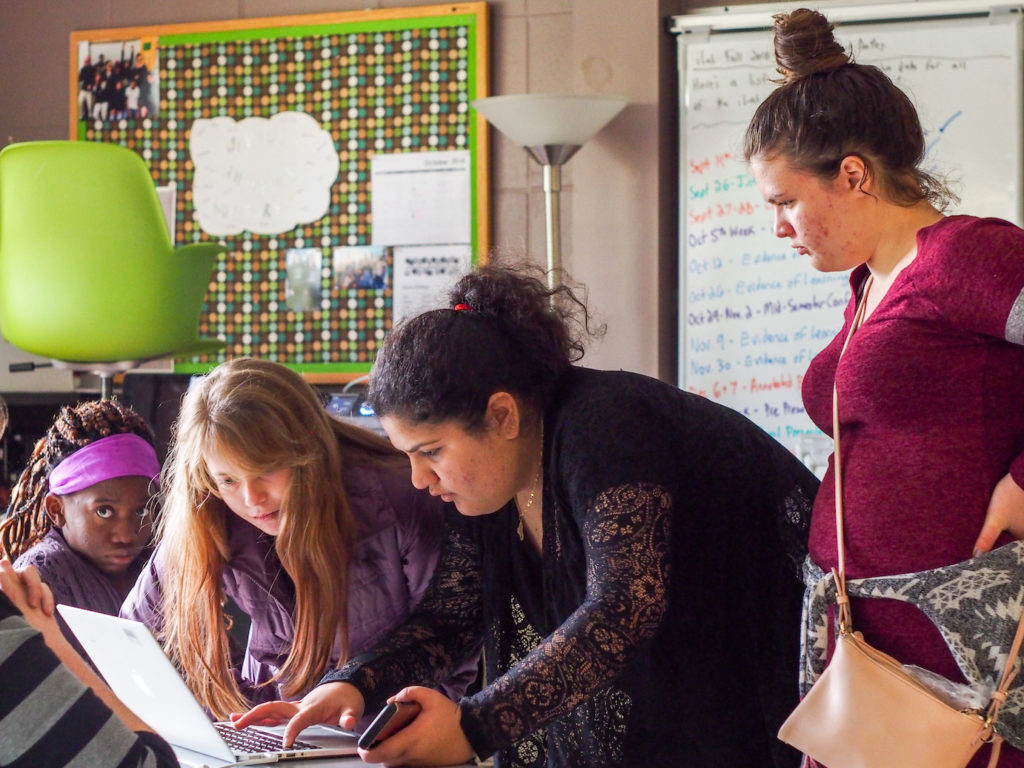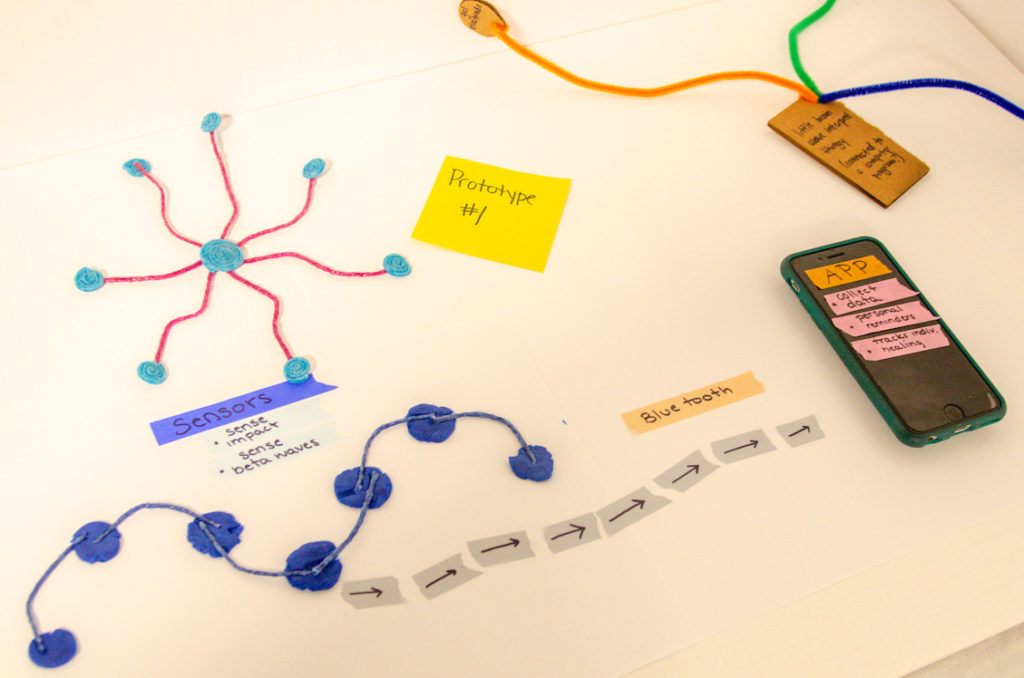A 2017 article in The Atlantic titled, “America’s Lost Einsteins,” by Alana Semuels, focuses on the economic disparity of who gets to invent — and how that affects us all.
Semuels found that “…if women, minorities, and children from low- and middle-income families invented at the same rate as white men from high-income families, there would be four times as many inventors in America as there are today.”
More inventors mean more innovation, and more innovation means more people are contributing to the broader social good, including a thriving economy.
Stunningly, researchers found that “if girls were as exposed to female inventors as boys are to male inventors, the gender gap between male and female inventors would fall by half.”
Generator’s solution? SPARK.
Our SPARK program engages women and gender non-conforming students in the STEM fields — that’s science, technology, engineering, and math — through a year-long design-thinking process to develop, prototype, and pitch an invention.
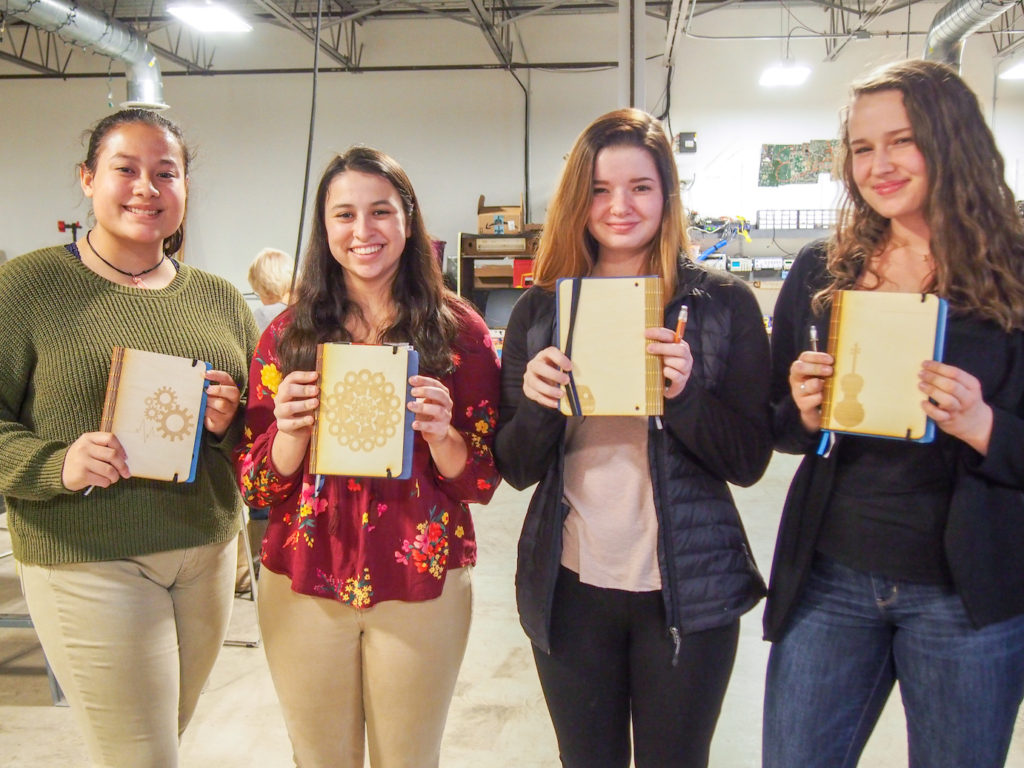
Spaulding High School (Barre) students show off laser cut live binding journals they made in a workshop where they learned how to use Adobe Illustrator and the Epilog laser cutter.
SPARK’s focus is to expose students to careers in the STEM fields with long-term mentor relationships, ongoing exposure to advanced tools and technology, and by experiencing failure in a supportive and collaborative environment.
“School doesn’t teach you that failing is part of learning,” Program Director Rachel Hooper said, “Students get this false idea that success is a polished thing that only smart people achieve when in reality those ‘successful’ people had more opportunities, they had support, and they still probably experienced a lot of failures before they became successful.”

The team from LUND Center participates in a wearable electronics workshop with Generator member and educator Jill Dawson and learns about basic wiring and electronics.
Hooper set out to design an ambitious program. She partnered with Connie Liu, founder of Project Invent, using their curriculum to shape a program that uses design-thinking and physical computing to create new technologies that solve problems that affect their communities.
“Design thinking is a human-centered approach to problem-solving,” Hooper explained, “It’s an iterative design process in which teams design with community members to solve their problems by empathizing with their needs. Students learn to test their ideas prototypically and bring their designs back to the community member for testing and feedback throughout the process.”
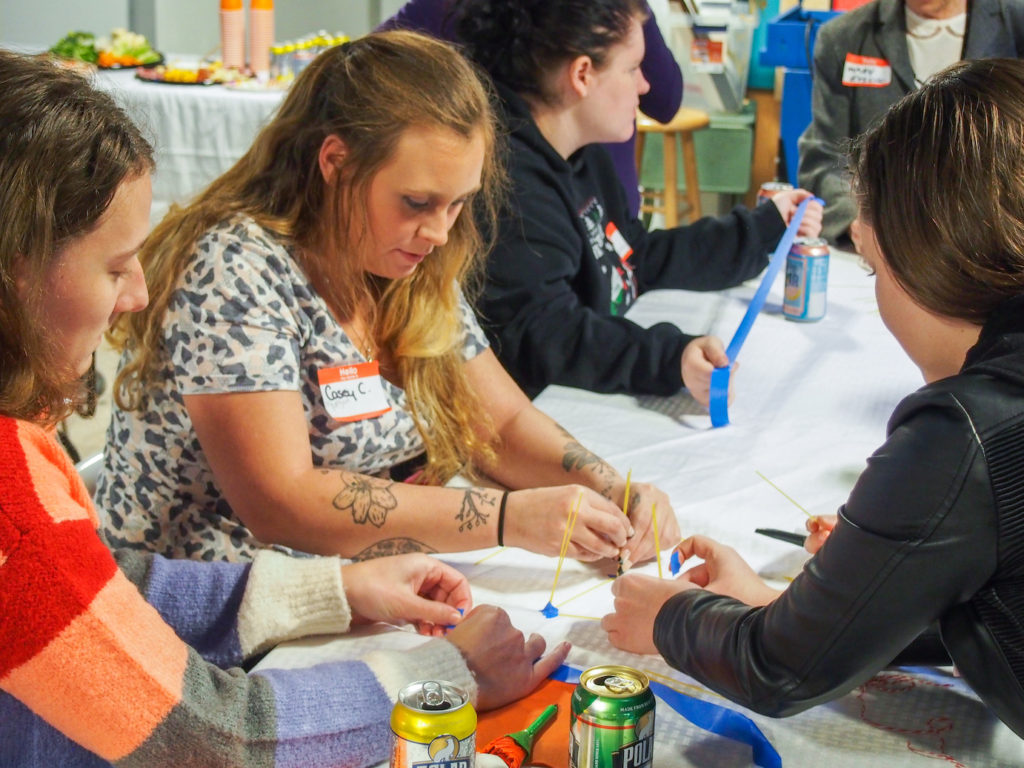
At the SPARK kick-off event, teams participated in fun exercises like the Spaghetti Tower Challenge to warm up their design-thinking, team-working, and problem-solving skills.
Generator partnered with Winooski High School, Spaulding High School in Barre, and the Lund Center. Each institution had students facing different barriers.
“There are very large gaps in innovation by income, race, and gender,” Hooper said. “Most young people are not being shown these kinds of STEM pathways and they are not seeing themselves represented in the STEM community. When young women are invited to the world of design and invention and shown that other women are building their careers in the STEM fields they can create a pathway for themselves.”
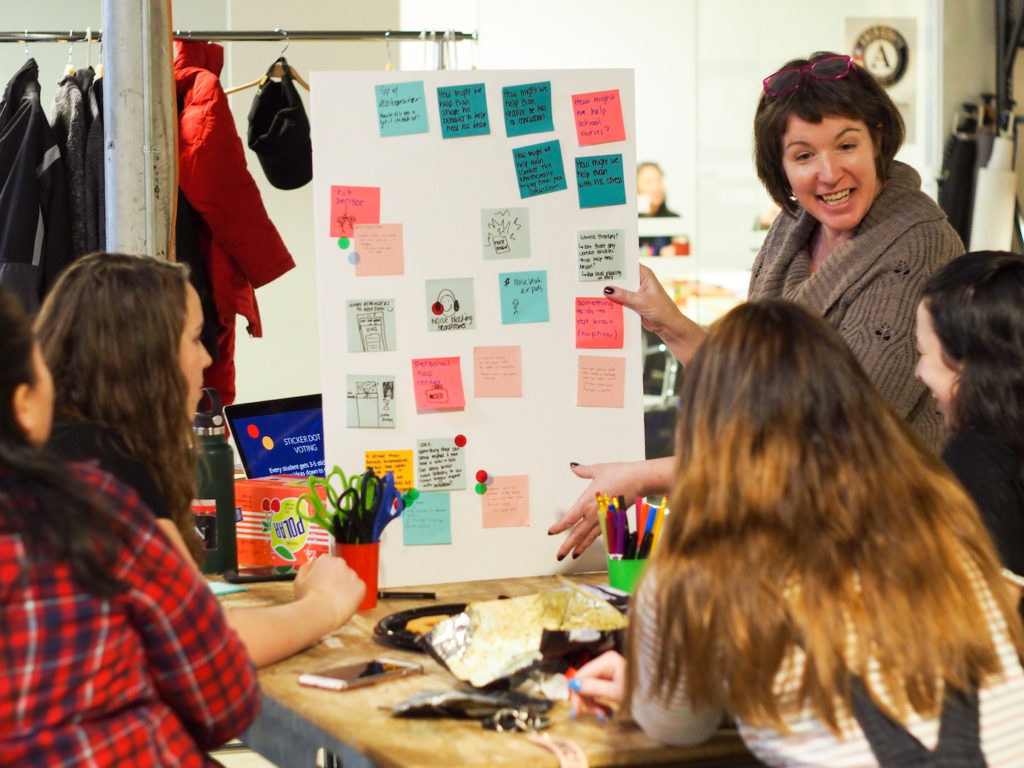
Education and Outreach Director Rachel Hooper facilitates a brainstorming session for the Spaulding High School team.
SPARK started in fall 2018. Rachel met with teams once each week, usually at their schools, to brainstorm project ideas. The teams worked in consensus to conceive of and refine their project ideas.
The team from Spaulding High School is developing a concussion tracking field kit for nurses and athletic coaches to track student-athletes’ brain health throughout their high school experience. Collecting this data could change the way schools help students recover after a concussion.
Because it’s a design-thinking process, the team’s first task was to meet with people who had experience with concussions so that they could listen and design with an end-user in mind.
The Spaulding Team was able to meet with a Generator member who had a traumatic brain injury (TBI), as well as a person who runs a TBI support group at UVM.
Through these meetings, the Spaulding High SPARK team learned that simply recognizing a concussion was a challenge, so the team shifted gears; instead of designing a product for concussion relief, the team set out to develop a concussion identification field kit for school nurses and coaches.
With their product ideas in mind and on paper, the SPARK teams started meeting at Generator to begin prototyping.
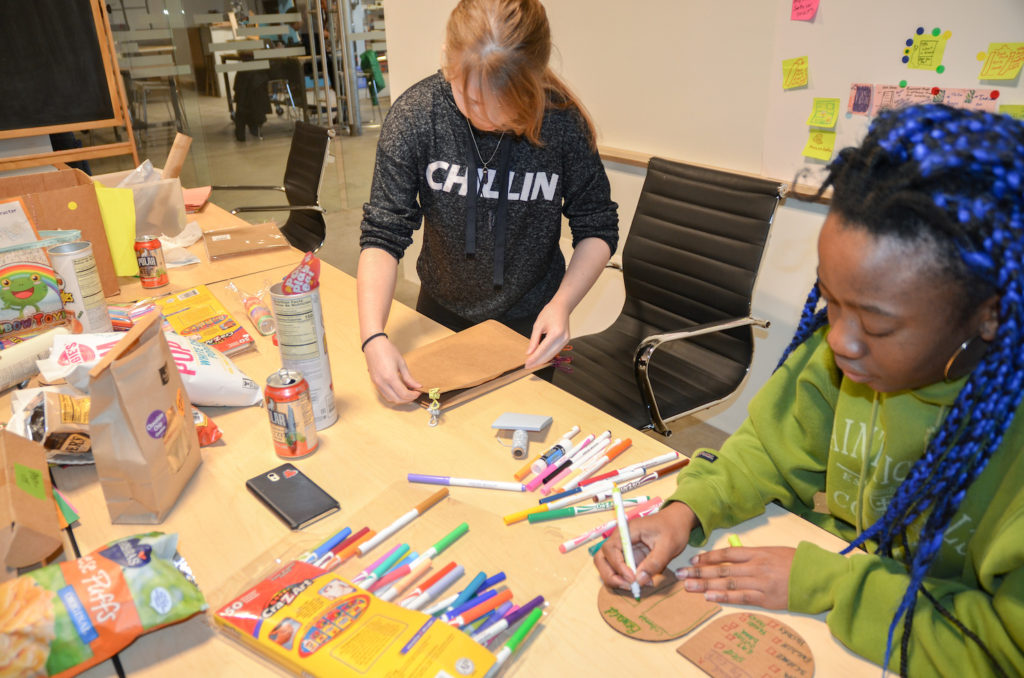
Madison (left) and Stephie (right) of the Winooski SPARK team work on prototypes in Generator’s conference room.
“I went into this new environment, Generator, and it stimulated me to work harder,” said Madison, a senior at Winooski High School. “There were lots of tools, and we were in this board meeting room with glass doors… it made me feel more important and like I was actually doing something helpful for people.”
First, the students worked with art materials and cardboard to sculpt their prototypes. Soon, they’ll learn how to design in Illustrator and other computer programs to create prototypes with the laser cutter, the 3D printer, and in the electronics lab.
Once the prototype is made, the next step is to have their subjects test their inventions. “We’re making assumptions,” Stephie, a sophomore at Winooski High School explained, “Now we need to get into the reality and see if this is really working, and if it’s not, our goal is to find something else that works better.”
So is SPARK working?
“Since I’m a senior and I’m about to graduate I am thinking of careers and stuff,” said Madison, “Ever since SPARK my eyes have been opened to inventing.”
Madison went on to say that she’s hoping to spend more time at Generator. “I’m excited to figure out how to make more things with sensors.”
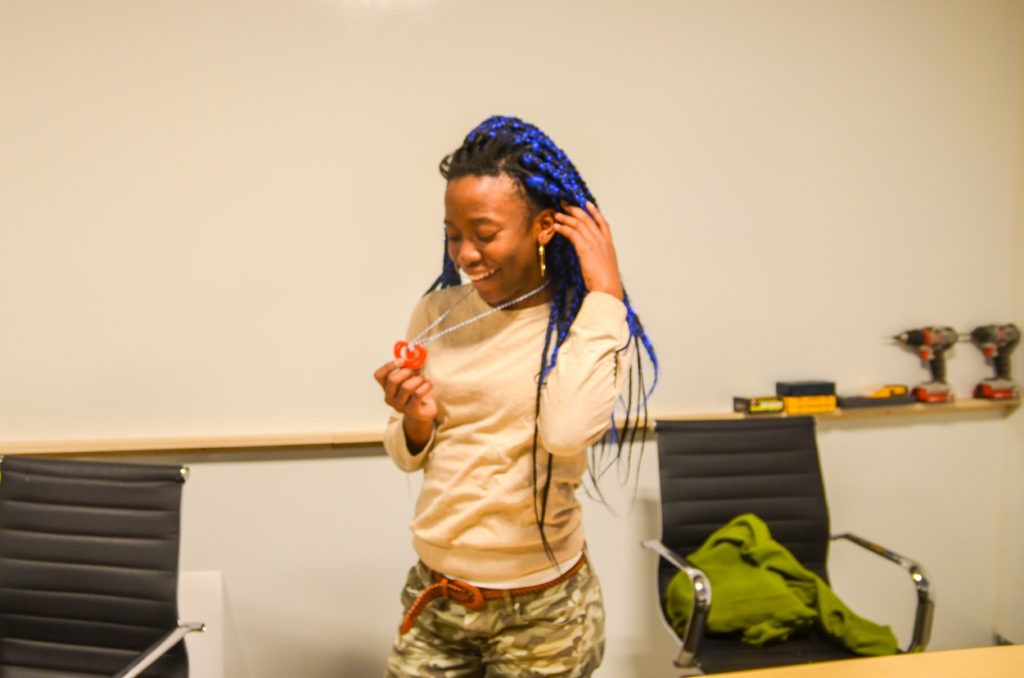
Stephie of the Winooski High School SPARK team shows off her prototype for a heart rate monitor necklace that helps the wearer monitor stress.
Program Director Rachel Hooper isn’t surprised. “The traditional thinking is that you need to be good at math and science and you have to have four years of undergrad AND an advanced degree to enter a STEM field,” she said. “Makerspaces change that.”
Stay tuned for more from SPARK.

